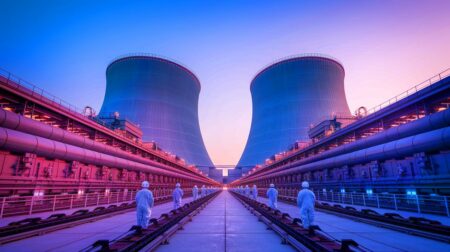As sustainability becomes a critical issue for us all, more and more people search for ways to shrink their carbon footprints at home.
Many home owners are installing energy-efficient appliances to minimize their reliance on fossil fuels. Others are installing rooftop solar panels, eliminating their connection to the conventional power grid.
At the same time, countries around the globe are creating carbon-neutrality goals with environmental sustainability in mind. These goals are within reach when people and governments utilize alternative energy technologies and prevent unnecessary greenhouse gas emissions. Adopting emission-free generators can help households and businesses shrink their carbon footprints, preventing additional climate change effects.
Most generators run on gas, diesel, natural gas, or propane, all of which produce emissions. People rely on generators for both backup power and additional sources to decrease stress on the grid.
When people use fossil-fuel-dependent generators, they contribute to atmospheric pollution. As greenhouse gas emissions from the devices invade the atmosphere, they change its composition. This alteration compromises Earth’s ability to produce and regulate life-sustaining surface temperatures.
This enhanced greenhouse effect causes a variety of challenges, like forced migration, water displacement, agricultural limitations, coastline submergence, and more. Individuals can decrease the emissions in the atmosphere by investing in alternative generators. Environmental engineers and scientists developed three emission-free devices to provide clean energy to home owners on a small scale.
1. Solar-powered generators
The first green alternative to residential generators is solar-powered versions. These are portable power systems using photovoltaic (PV) solar panels to collect energy instead of fossil fuels. PV systems work by absorbing sunlight and converting it into usable energy. PV devices release zero emissions while generating power.
Solar generators use the direct current of energy to support power production. While the technology’s uses in the residential sector are minimal right now, many storm-prone regions rely on these generators as reliable backup sources.
After Hurricane Maria hit Puerto Rico in 2017, many locals lived without power for months. The elongated outages compromised the community’s safety and access to medical and communication services.
Disaster relief professionals identified solar as an efficient response supply to regions devastated by hurricanes. If Puerto Rico had solar generators following Maria, residents’ access to life-supporting resources and services would be improved.
Engineers developed portable solar devices to send to areas during outages as part of a relief package. Communities will have access to remote power sources until electricians repair their conventional grid.
2. Wind turbines
Wind turbines act as a green alternative to conventional generators by creating accessible electricity during outages. Storms are significant contributors to brownouts and blackouts, but they also increase wind speeds, helping turbines produce more power.
The turbine blades connect to a generator through the shaft and various gears. As the rotor moves, the generator produces a current of electricity. Residents can access the power as the turbines produce it without any interference. Turbines also create electricity without emissions, which helps to conserve the composition of the atmosphere.
3. Battery-powered generators
Battery-powered generators produce electricity less efficiently compared to the renewable systems above. They are ideal for residents looking to charge their smartphones and other smaller appliances during outages. Modern electric generators come with 120-volt outlets, DC chargers, and USB ports.
Like the two devices mentioned above, battery-powered generators produce zero direct emissions, shrinking residents’ carbon footprints. They also help communities gain access to necessary medical and communication systems.
Things to consider
After evaluating the three alternatives to fossil fuel home generators, you may feel compelled to invest in one for your property. Before making a purchase, it is essential to assess your residential energy needs. You can calculate the size and type of generator you need by examining your devices’ electricity pulls and by running a home energy audit.
Next, individuals should set a reasonable budget for their purchases. Green generators can be costly and require additional installation fees. After assessing your power needs and price range, you can begin searching for an effective and reliable system.
As eco-consciousness continuously rises, green technological advancements will continue improving emission-free generators. Hydrogen fuel cell storage technology shows promising potential in the disaster relief sector. It may also support a clean electric grid, both helping residents during power outages.
Hydrogen storage helps energy professionals capture and hold renewable power for extended periods. Solar panels and wind turbines deliver electricity to residents as they produce it. Fuel cells can store excess energy, creating a larger supply and ensuring power security during outages.
Which system is best for your residential energy needs?
There are various advantages and disadvantages to the three generator alternatives listed above. When purchasing a system, it is essential to evaluate each potential benefit to ensure the efficiency of the device.
Wind turbines are the most effective alternative because they reach their maximum electricity output during storms, creating a reliable power source.
Solar generators also deliver reliable electricity, but they are unable to achieve their maximum efficiency rates on cloudy days. Battery-powered generators are the least effective because their output is lower than the other options.
Each system provides unique benefits to residents and will help meet their energy needs.
Did you like it? 4.4/5 (23)








